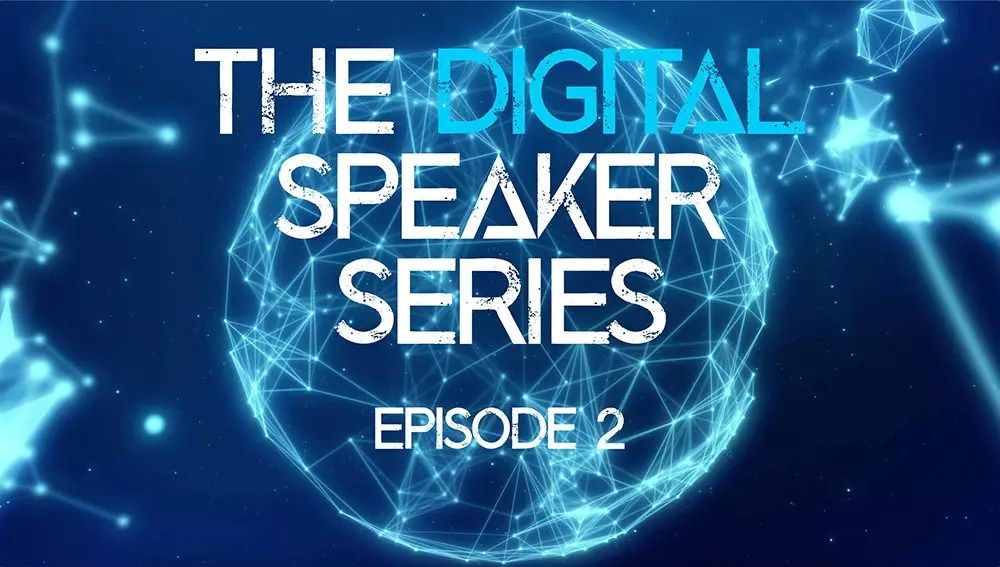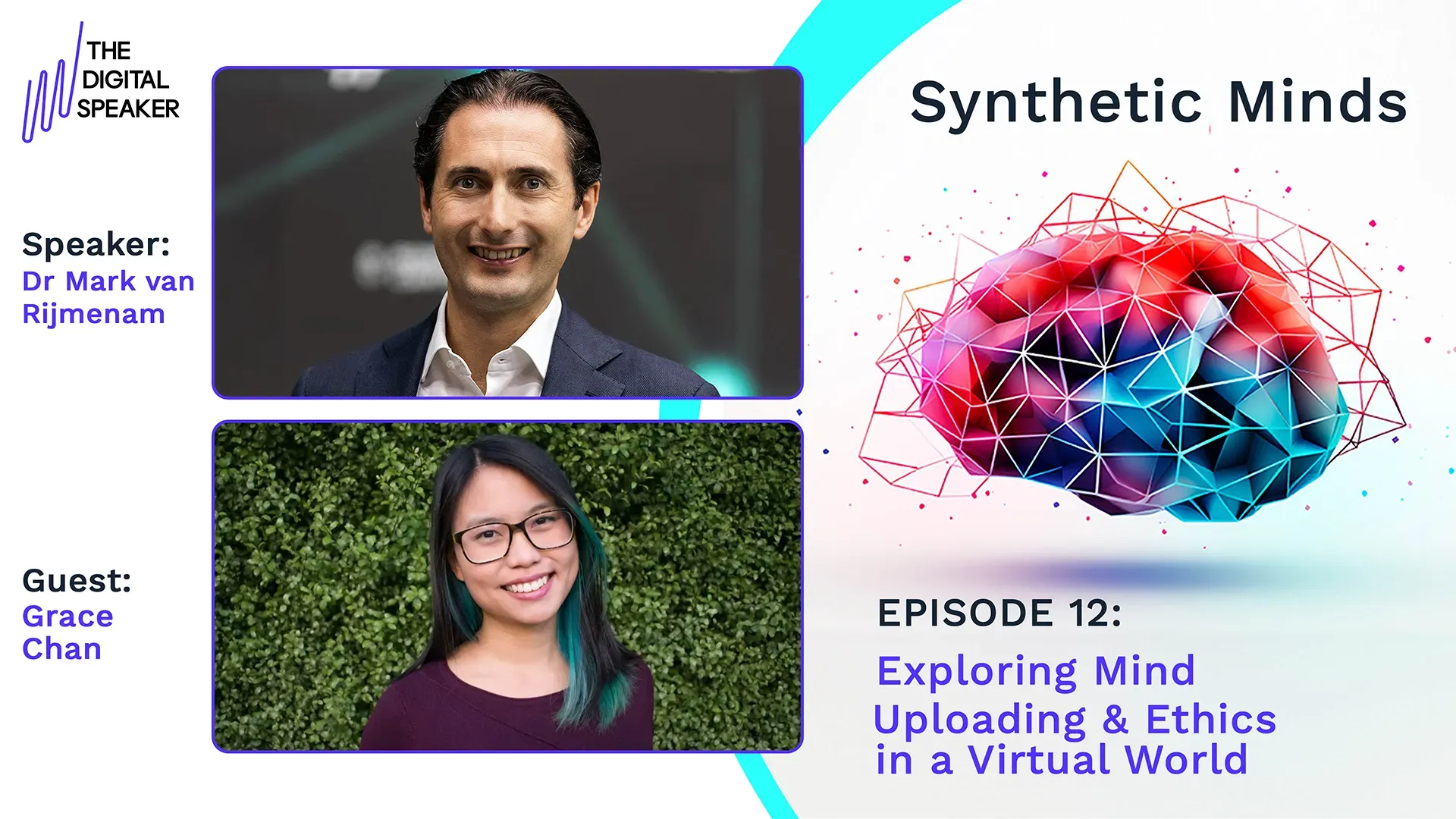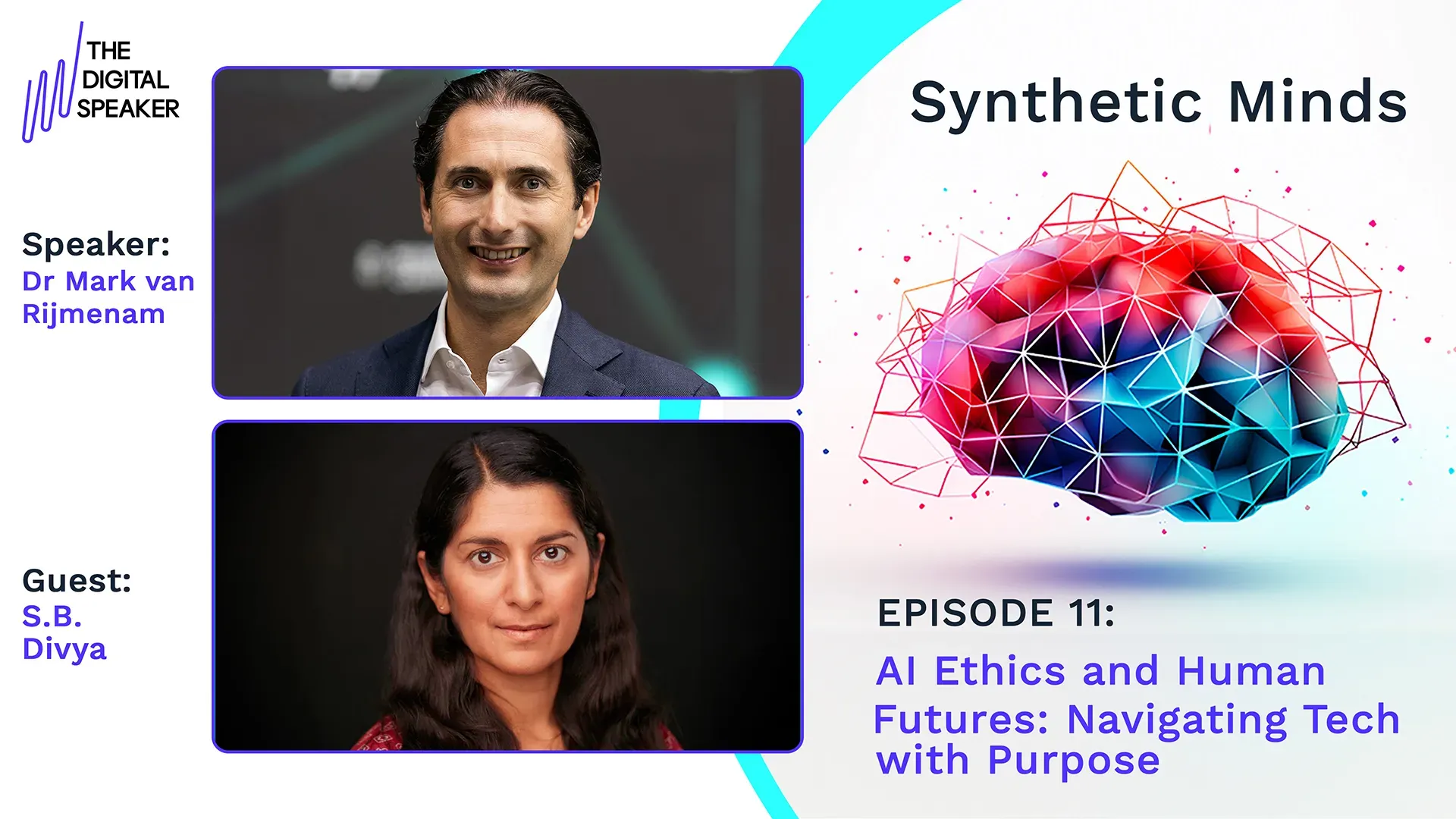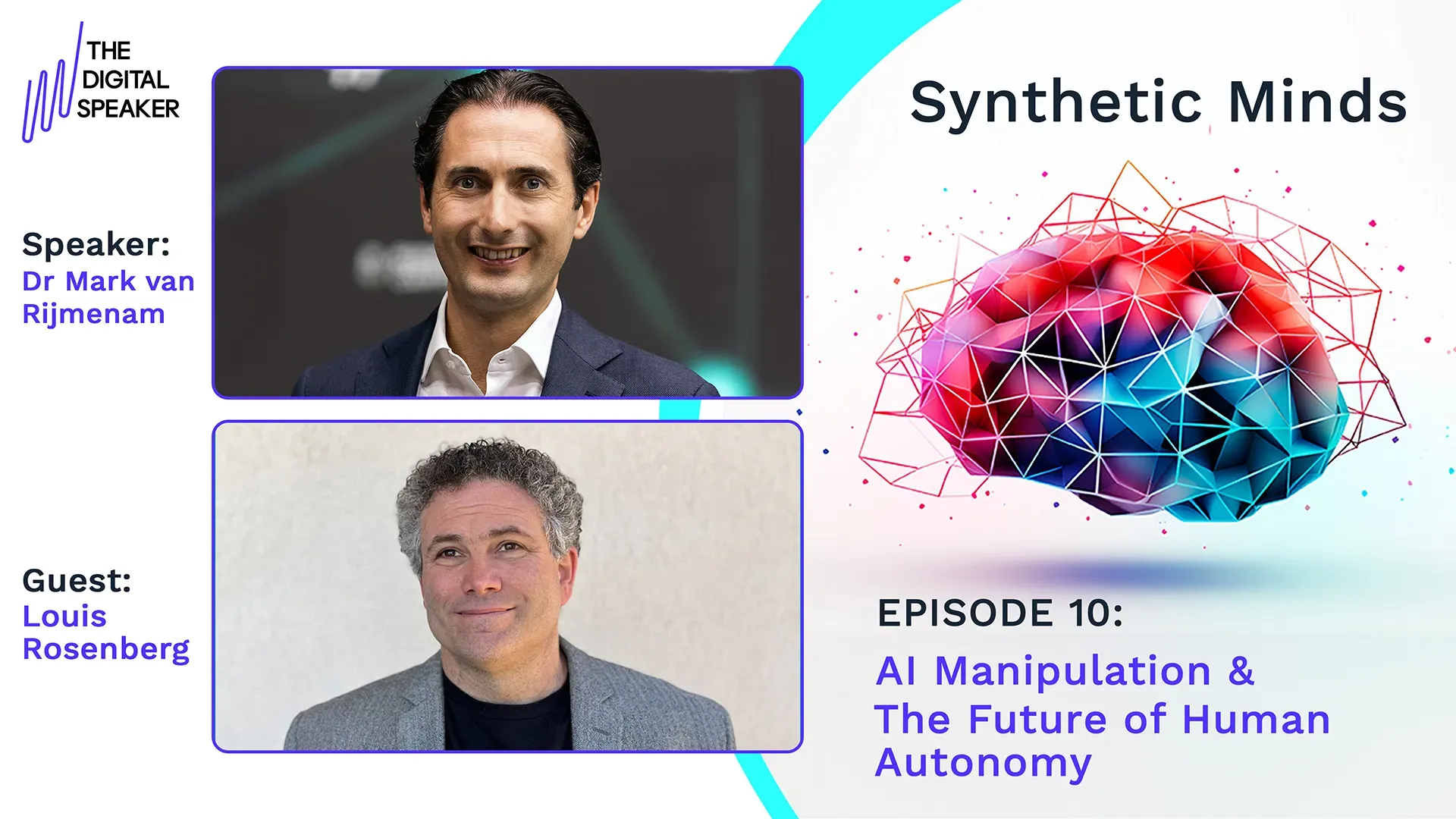The Digital Speaker Series: Tech Journal - Episode 02

Welcome to the second episode of The Digital Speaker series (you can watch the first episode here). Today I’m coming to you from live inside the digital world. While the actual Mark may have recorded this before, I, Mark’s digital clone, am live code, and right now, this very second, am being brought to life by 1s and 0s inside cyberspace.
Through this miracle of digital evolution, I am going to discuss the latest digital advancements from the comfort of inside the digital world.
From blockchain and crypto through to quantum computing and AI, I aim to keep you in the forever turning digital loop, as well as putting some thought into how these digital innovations look to change our lives.
Today I am covering at Samsung’s plans for 6G and what this level of internet could enable us to do. I will go where no internet has gone before, and take a look at Space internet, what it is, who’s doing it, and what it could mean for humanity. Then I’ll finish the show by tackling digital currency, specifically China’s digital Renminbi and how it’s on track to topple the dollar.
Put your feet up, get comfortable, and let us start speaking digital.
You can either listen to the episode above via your favourite podcast platform or view it via Vimeo, YouTube or watch it below. If you prefer to read, you can find the transcript of the episode below.
Upgrade the Upgrade
While we have only just begun seeing the rollout of 5G, Samsung has already started work on 6G. In their recently published 6G whitepaper, Samsung’s head researcher, Dr Sebastian Seung, stated that they expect 6G to be ready by 2028, followed by a mass rollout in 2030.
To give some perspective; 5G achieves twenty gigabytes per second at peak performance, with a user experience averaging around 0.1 to 0.2 gigs per second. But 6G, 6G is a whole different ball-game.
By the end of the decade, we can look forward to 6G providing us with a peak data performance rate of 1,000 gigabytes per second. That is a huge one terabyte per second peak data rate.
Translating that into user-end terms, we can expect to experience a minimum rate of about one gig per second. Waiting for downloads will become a thing of the past.
What is more, Samsung published a list of exciting digital tech that 6G makes possible. A couple of which being holograms and digital replicas.
Holograms
First, holograms, or rather, high-fidelity mobile holograms, are on track and, due to their data demands, will be released at the same time as 6G. The ability to replicate the digital world in three dimensions is already big business, with the hologram market expected to be valued at seven point six billion dollars by 2023.
With holograms covering the digital world moving to our three dimensions, ‘digital replicas’ will do the opposite. Taking our world and re-creating it, down to the most microscopic detail, in the digital realm.
With the help of advanced sensors, AI, and communication tech, these replicas will mimic physical objects, including people, devices, objects, systems, and even places, in a digital space.
This means that we will be able to create ‘digital twins’. An accurate digital version of ourselves moving around in a precise copy of reality. Giving users the ability to explore real-world and fictional locations from the safety of the digital world.
Try and imagine using a digital clone similar to mine, and exploring a perfect digital version of New York, Paris, or the Moon, from the comfort of your own home.
Digital Twins
Taking this further, users could even move around the real-world version of the space by controlling a robot and using the area’s digital twin as a map. So, imagine being in the digital clone of Paris, while controlling a drone, that is flying round the real-world Paris.
Unfortunately, Samsung foresees performance issues as most hardware available to the public would not be able to cope. Although, they are already working on a work-around as they look to offload the majority of the computing to dedicated servers, streaming the content to the user’s local device.
Now, from terrestrial internet to something almost out of this world, Low-earth orbit internet satellites.
ET Skypes Home
SpaceX’s “Starlink” & Amazon’s “Project Kuiper” battle to be the first to dominate the space internet industry. Starlink aims to launch 12,000 satellites into low earth orbit by 2027, increasing that number to 42,000 in the years following. These will then form a global web, beaming high-speed internet to every corner of the world.
So far, SpaceX has only launched 500 but aims to have North America up and running by 2020, Europe turned-on by February 2021, and the rest of the world by 2022, bringing forward their 2019 schedule by two years.
Their schedule has moved forward so much that they are already beta testing with live users. Beta invites have been sent out to some of the 700,000 individuals who expressed their interest earlier in the year, with more invites going out all the time.
These beta testers have already reported speeds of more than 160 megabits per second, however, with up-front costs of $600 to join, broken down into just under $500 for a tripod and router, then $99 for a monthly subscription, the privilege to test this groundbreaking tech is not particularly cheap.
Musk has spoken of aims to dramatically reduce these costs once the service is mainstream. Having said all that, Bezos is not out of the race just yet.
Amazon’s own version, “Project Kuiper”, recently got permission from the American FCC to launch 3,236 satellites into low-earth orbit, heating up the competition.
The FCC mentioned they specifically granted permission to Amazon to launch these satellites to “increase the availability of high-speed broadband services to customers, government and businesses”. Which given recent pandemic related events, this aim is all the more vital.
If we also consider that only 59% of the world have access to the internet anyway, that still leaves 41% of the human population without access to the education, business, and personal opportunities the internet provides.
Putting all this in real-world terms, once space internet becomes mainstream and affordable, every human with a device will have access to the internet no matter their geographical location. You will be able to use Facebook from the North Pole, buy shares from the middle of the Sahara, or order from Amazon while in the, well, Amazon.
The coming decade will begin with space internet and end with 6G. We, as private citizens and business owners, can look forward to a vast increase in internet capabilities, empowering us to achieve and create so much more than at any point in human history.
Talking about business, let us move to our final segment, digital currencies.
The Digital Currency Race
China’s new digital currency, the ‘DCEP’ or Digital Currency Electronic Payment, is taking off and, if the US does not do anything, is set to topple the dollar.
Despite concerns over widespread adoption of a digital yuan in emerging markets and international trade, China is going full steam ahead in an attempt to seize power away from the dollar and Libra, as they internationalise the Yuan, reducing dependence on the dollar.
Back in April, they already embarked on testing, inviting four major state-owned banks, the top three telecoms companies, and Huawei to the table. Huawei went so far as to partner with the People’s Bank of China and entered a cloud deal with the Digital Currency Research Institute, a significant step in developing their digital cash.
Since then, China’s central bank has issued ten million yuan, roughly one point five million dollars or one point one million pounds, to roughly 50,000 people in the Shenzhen area via a national lottery. The lucky winners can spend their digital cash in over 3,000 shops.
A couple of DCEP features that make it better than cryptocurrencies are the ability to exchange offline and not require a third party. The DCEP lets users exchange cash to their heart’s content, utilizing their phones NFCs, Near-field-communication, to transfer cash quickly and easily.
The currency would be centralized too, giving the power to create and destroy money directly to the People’s Bank of China, also enabling them to control inflation, ensuring the DCEP will always be one for one with the Yuan. However, much like crypto, the DCEP uses private and public keys and aims to break apart the traditional banking systems.
US Regulators
Regulators over in the US are also unwittingly assisting China.
Both Sharon Bowen, a former CFTC commissioner who currently sits on the board of directors for New York Stock Exchange-owner Intercontinental Exchange, and Sheila Warren, head of blockchain at the World Economic Forum, have both expressed deep concerns over America’s lagging efforts.
On June 30th, the US Senate Banking Committee held a hearing on the future of the digital dollar. American regulators expressed deep concerns over the long-term threat to the traditional financial systems a digital dollar and Libra holds. Not particularly the ‘can-do’ attitude needed to win this currency race.
Who knows what the future will hold, but one thing that can be foreseen is that digital currency is well on its way, and when it gets here, the way we do business will be forever fundamentally changed.
From 6G improving what we can do with the internet, Spacelink giving the entire world internet access, and digital currencies becoming a reality, the digital frontier is coming to life as more and more of the real world is emigrating to the digital one.
As society becomes more and more reliant on the internet, with the digital frontier becoming the focal point, it is safe to say that, much like changes seen in the automobile from 1920 to 2020, over the next century the internet will revolutionize and change the world entirely.
Sometimes it may feel like as a society we have stalled, but if history has taught us anything, it is that if we keep our eyes looking forward and our minds set on innovation, we can and will keep moving.
That is all we have time for today. I have been your host, Mark van Rijmenam, The Digital Speaker, and you have been watching the Tech Journal. For other episodes, or the audio version, please follow the below links:





























